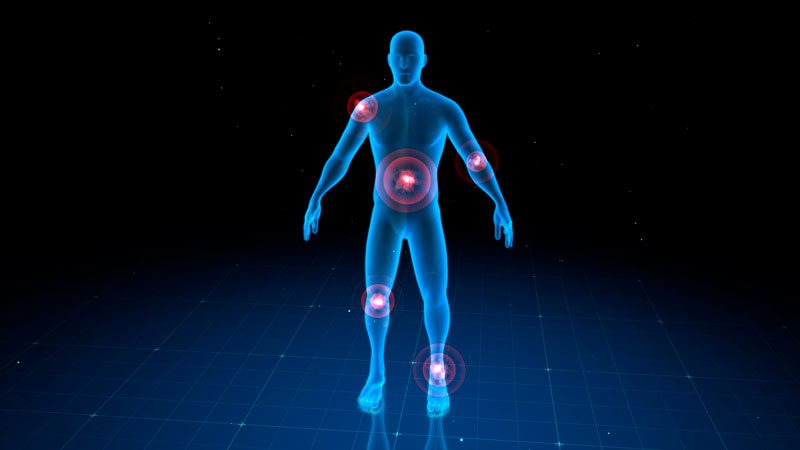If you have ever heard of resting metabolic rate and are interested in learning more about it, this blog will be of great help to you, where we delve into the intriguing world of resting metabolic rate (RMR) and its importance in maintaining a healthy lifestyle. In this article, we will explore what RMR is, the factors that influence it, and how to determine a good resting metabolic rate.
Resting metabolic rate refers to the number of calories your body burns while at rest, performing essential functions like breathing, blood circulation, and temperature regulation. Understanding your RMR is vital as it provides valuable insights into your body’s energy needs and helps you make informed decisions about your diet and exercise routine. We will uncover the various factors that affect RMR, including age, gender, body composition, and genetics, enabling you to better comprehend their impact on your metabolism. By the end of this article, you will gain a clear understanding of what constitutes a good resting metabolic rate, empowering you to optimize your metabolism for improved overall health and well-being.
Understanding Resting Metabolic Rate: What is Resting Metabolic Rate (RMR)?
Resting metabolic rate (RMR) is a fundamental concept that plays a crucial role in our overall energy expenditure. It refers to the number of calories our bodies burn while at rest, performing essential functions such as breathing, circulating blood, and maintaining body temperature. Essentially, RMR accounts for the baseline energy required to sustain life when we are in a state of complete rest.
To put it simply, imagine yourself lounging on a sunny park bench in the heart of New York City, taking in the bustling cityscape. Even in this seemingly inactive state, your body is continuously working behind the scenes, utilizing energy to support vital bodily functions. These functions include the beating of your heart, the oxygen exchange in your lungs, the digestion of food, and the maintenance of your body’s internal temperature.
Therefore, determining your individual RMR is essential for various reasons. It helps healthcare professionals create personalized diet and exercise plans to achieve weight management goals effectively. By understanding your RMR, you can make informed decisions about your calorie intake, ensuring that it aligns with your body’s specific energy needs. Moreover, RMR provides a baseline for assessing changes in your metabolism, making it an essential component of overall health and fitness evaluations.
Visit the Nutrition Wellness Center in Queens for personalized guidance.

Factors Influencing Resting Metabolic Rate: Key Factors Affecting Resting Metabolic Rate
Several key factors influence resting metabolic rate (RMR), determining the rate at which our bodies burn calories while at rest. Understanding these factors is crucial for optimizing our metabolism and maintaining a healthy weight. Let’s explore some of the primary factors that affect RMR.
Age is a significant determinant of RMR. As we age, our bodies naturally undergo changes in body composition, including a decrease in muscle mass and an increase in body fat. Since muscle tissue is more metabolically active than fat tissue, a decline in muscle mass can lead to a decrease in RMR. This is why it becomes increasingly important to engage in regular physical activity and strength training as we get older.
Another factor influencing RMR is gender. Generally, men tend to have a higher RMR compared to women. This difference can be attributed to variations in body composition, hormonal factors, and muscle mass. However, it’s important to note that these gender differences are not absolute, and individual variations exist within each gender.
Optimal Resting Metabolic Rate: What Should You Aim for?
As mentioned before, determining a good resting metabolic rate (RMR) is essential for understanding your body’s energy needs and maintaining a healthy weight. While the specific RMR value varies from person to person, there is a range that can be considered optimal based on factors such as age, gender, and activity level.
To determine your RMR, various methods can be used, including indirect calorimetry, which measures the amount of oxygen consumed and carbon dioxide produced by your body. This method provides a highly accurate assessment of your RMR. Another commonly used approach is the use of predictive equations based on factors such as age, weight, height, and gender. While these equations provide a convenient estimate, they may not be as precise as direct measurement methods.
When aiming for a good resting metabolic rate, it’s important to consider your overall health goals and consult with a healthcare professional or registered dietitian. They can help you determine a target range based on your individual circumstances. Generally, a good RMR falls within the range that supports your overall health and enables you to maintain a healthy weight without feeling deprived or overly restricted in your calorie intake.
Conclusion
In conclusion, understanding and optimizing your resting metabolic rate (RMR) is vital for maintaining a healthy lifestyle and achieving your weight management goals. By delving into the factors that influence RMR, such as age, gender, and body composition, you can make informed decisions about your diet, exercise, and overall health. At Atlantic Endocrinology, a leading endocrinology clinic in New York, we specialize in providing comprehensive care and personalized guidance to help you optimize your metabolic health. Our team of experienced healthcare professionals, including endocrinologists and registered dietitians, is dedicated to helping you understand your RMR, develop tailored strategies, and create sustainable lifestyle changes. Contact us today to schedule a consultation and embark on a journey towards a healthier, balanced, and energetic life.